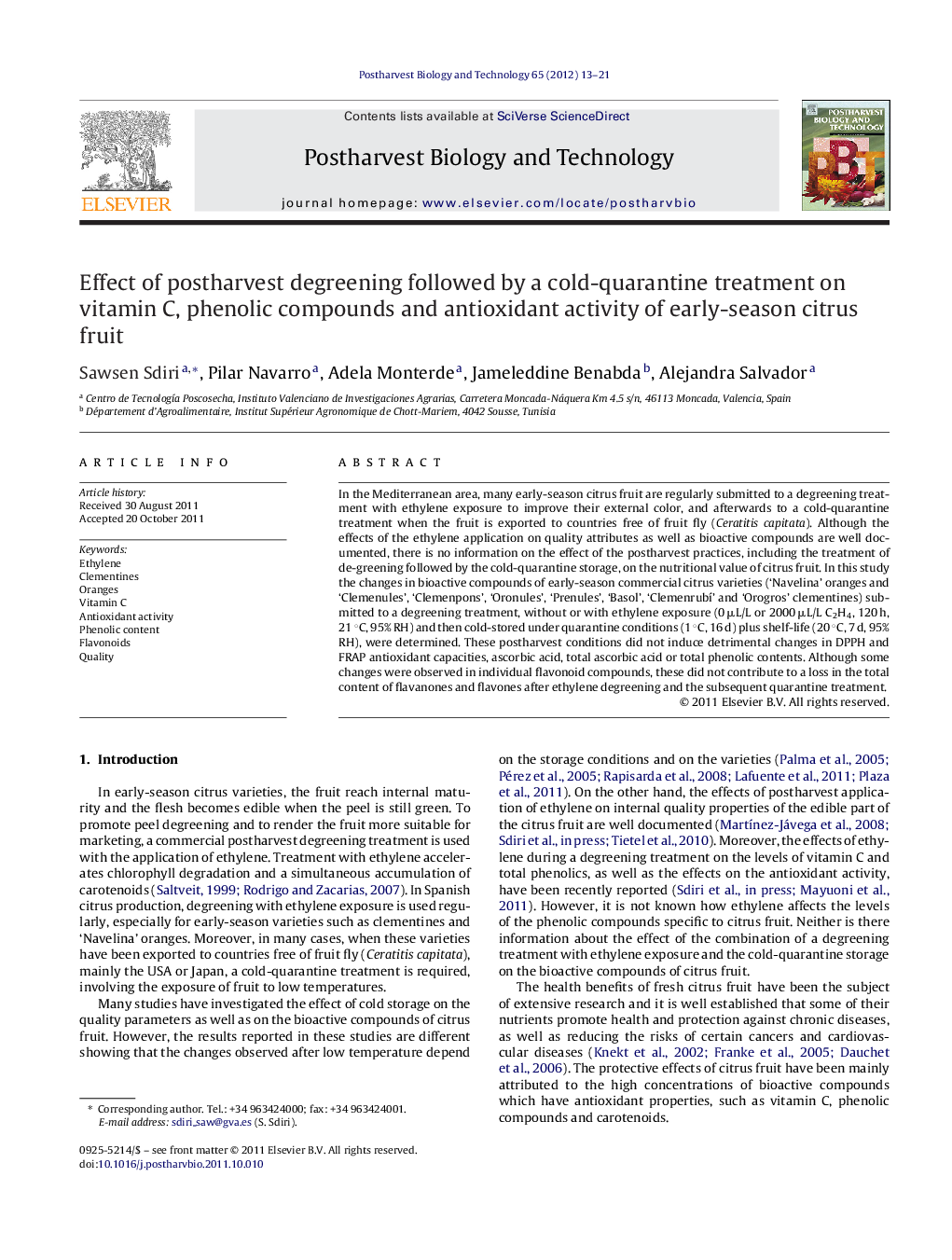| Article ID | Journal | Published Year | Pages | File Type |
|---|---|---|---|---|
| 4518788 | Postharvest Biology and Technology | 2012 | 9 Pages |
In the Mediterranean area, many early-season citrus fruit are regularly submitted to a degreening treatment with ethylene exposure to improve their external color, and afterwards to a cold-quarantine treatment when the fruit is exported to countries free of fruit fly (Ceratitis capitata). Although the effects of the ethylene application on quality attributes as well as bioactive compounds are well documented, there is no information on the effect of the postharvest practices, including the treatment of de-greening followed by the cold-quarantine storage, on the nutritional value of citrus fruit. In this study the changes in bioactive compounds of early-season commercial citrus varieties (‘Navelina’ oranges and ‘Clemenules’, ‘Clemenpons’, ‘Oronules’, ‘Prenules’, ‘Basol’, ‘Clemenrubí’ and ‘Orogros’ clementines) submitted to a degreening treatment, without or with ethylene exposure (0 μL/L or 2000 μL/L C2H4, 120 h, 21 °C, 95% RH) and then cold-stored under quarantine conditions (1 °C, 16 d) plus shelf-life (20 °C, 7 d, 95% RH), were determined. These postharvest conditions did not induce detrimental changes in DPPH and FRAP antioxidant capacities, ascorbic acid, total ascorbic acid or total phenolic contents. Although some changes were observed in individual flavonoid compounds, these did not contribute to a loss in the total content of flavanones and flavones after ethylene degreening and the subsequent quarantine treatment.
► Changes in bioactive compounds of early-season citrus fruit after degreening plus cold-quarantine treatment were investigated. ► Antioxidant capacity, vitamin C or flavonoids contents were not affected. ► Ethylene exposure improved external color of the fruit without having any effect on quality attributes.
